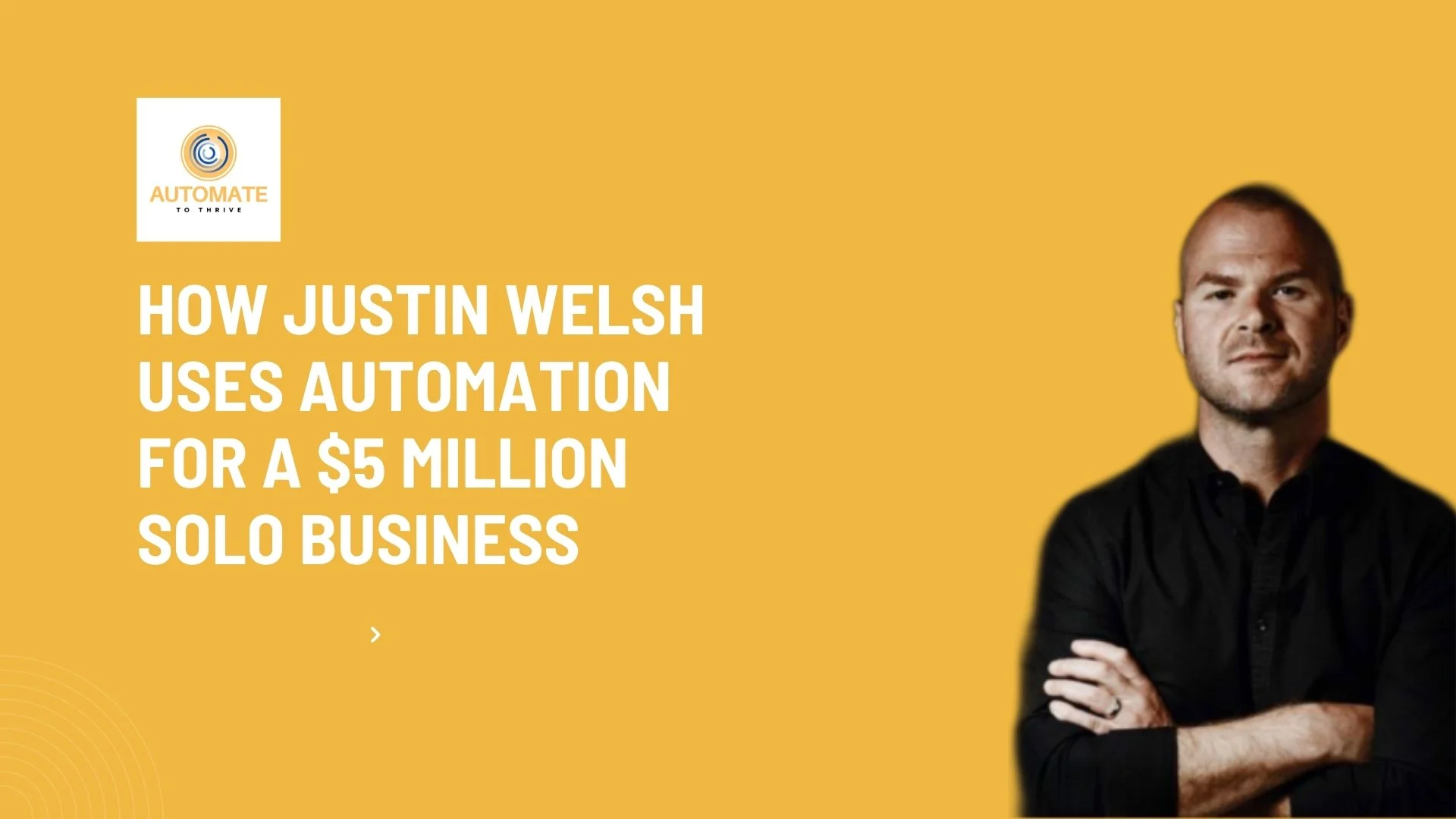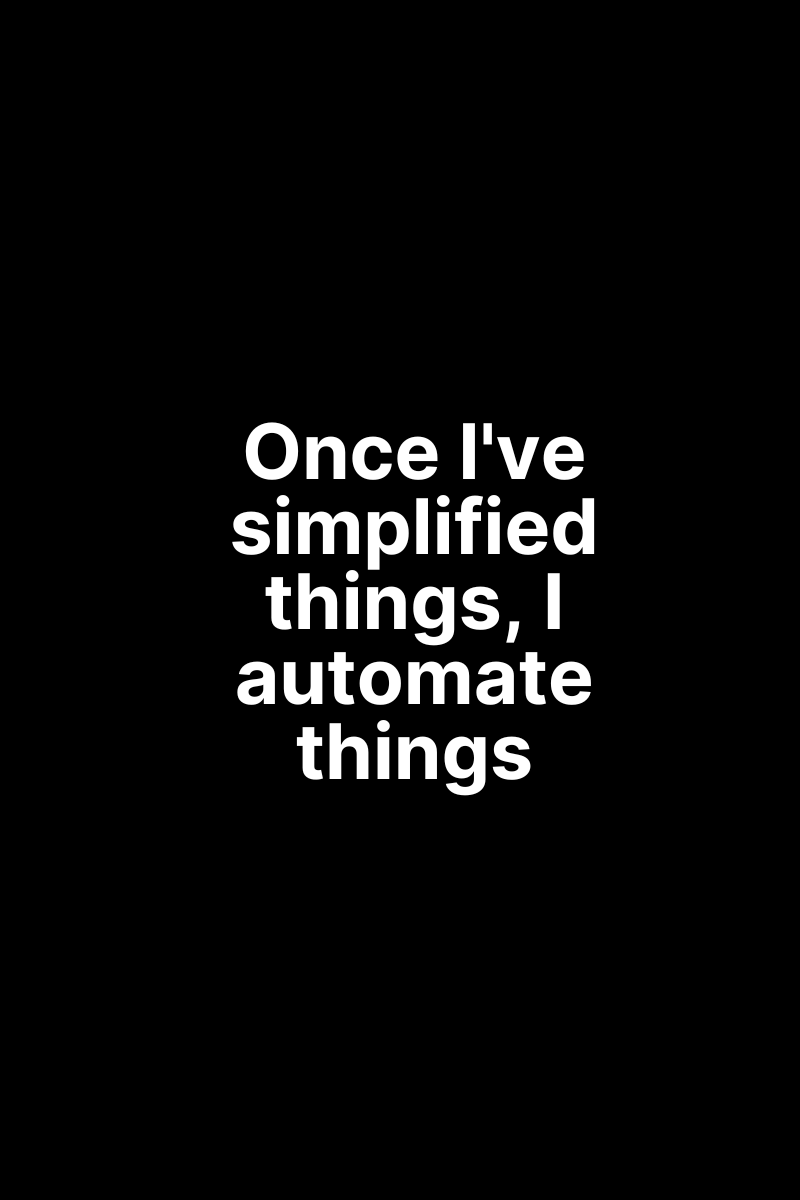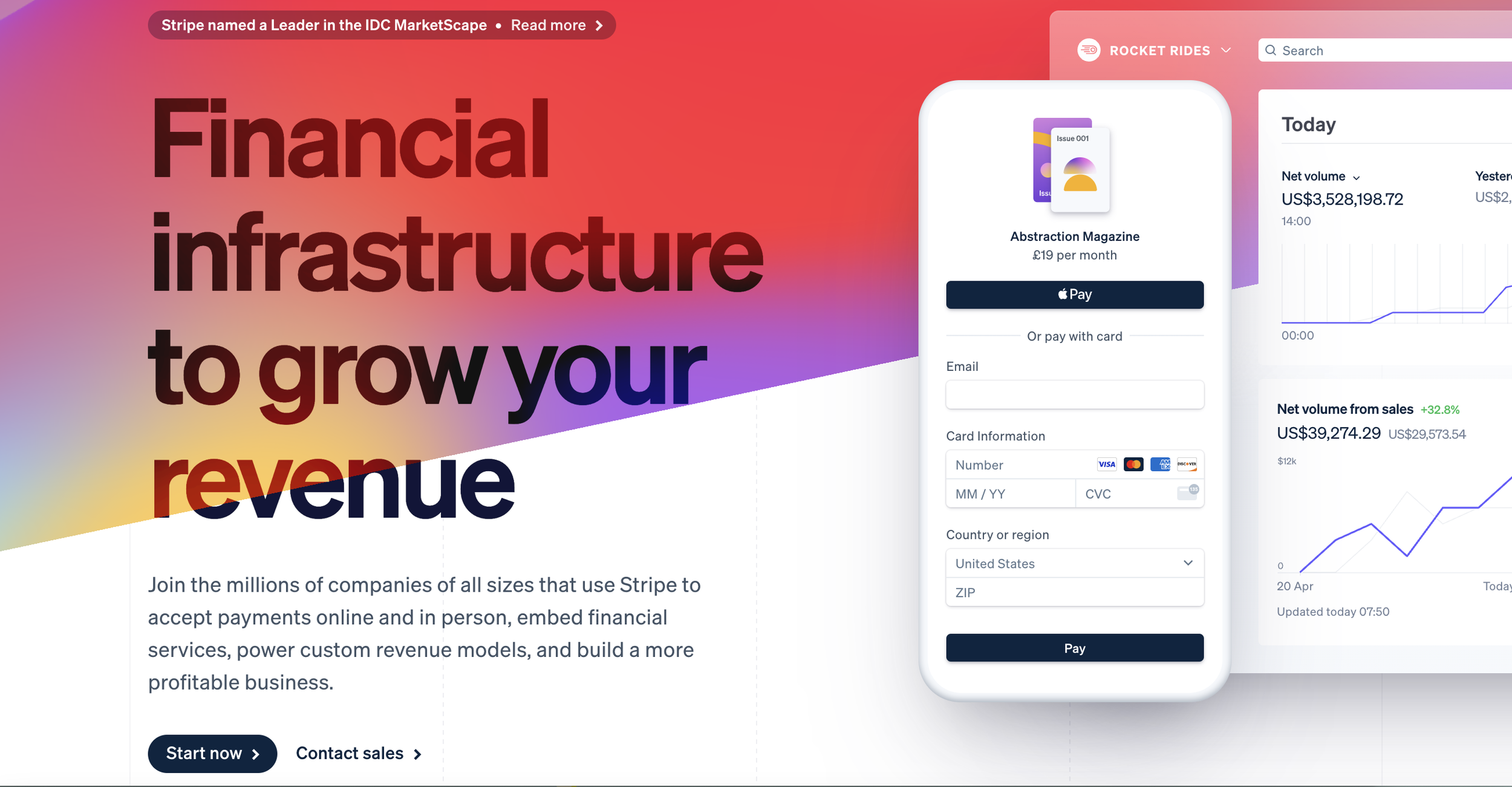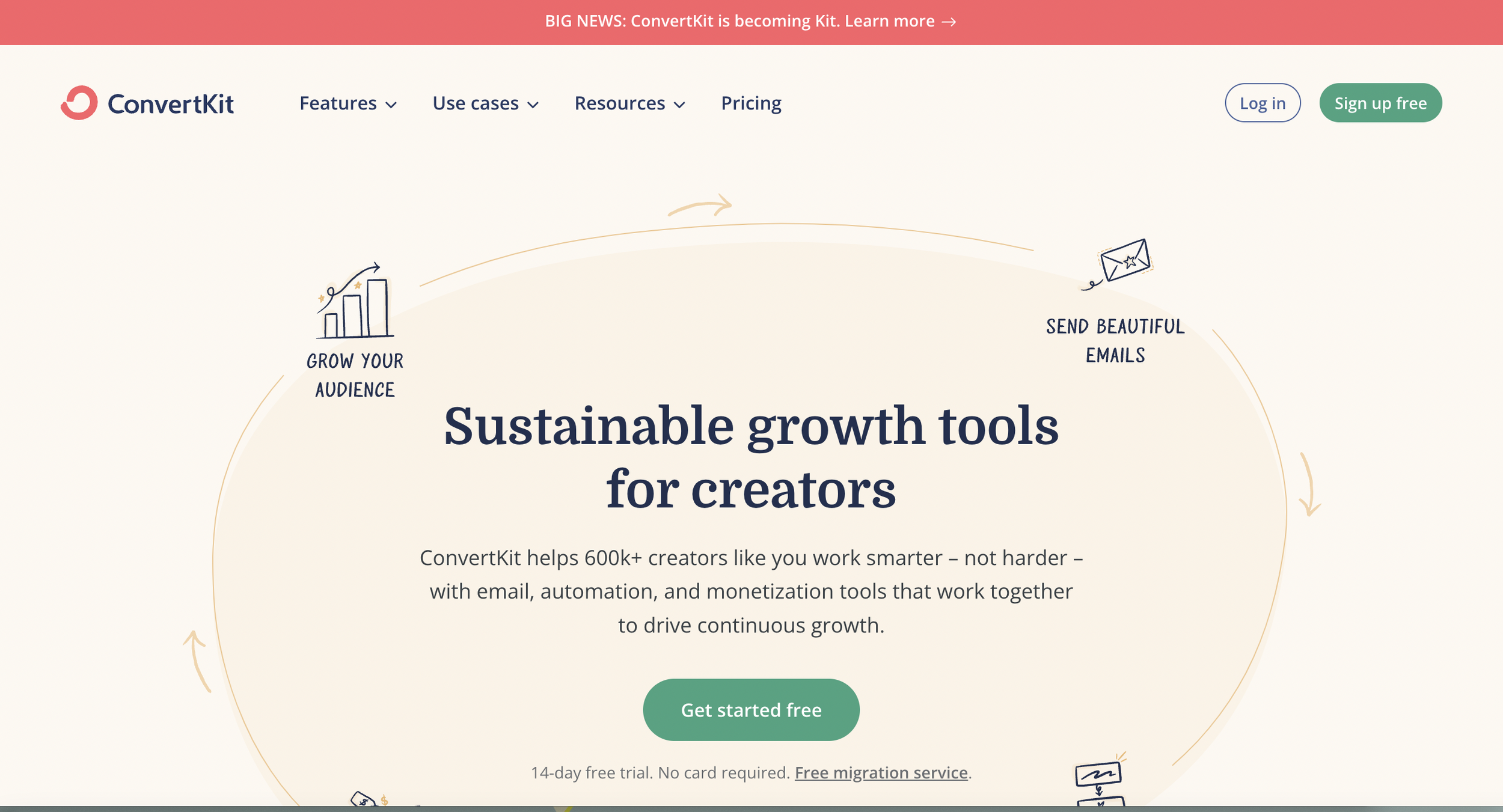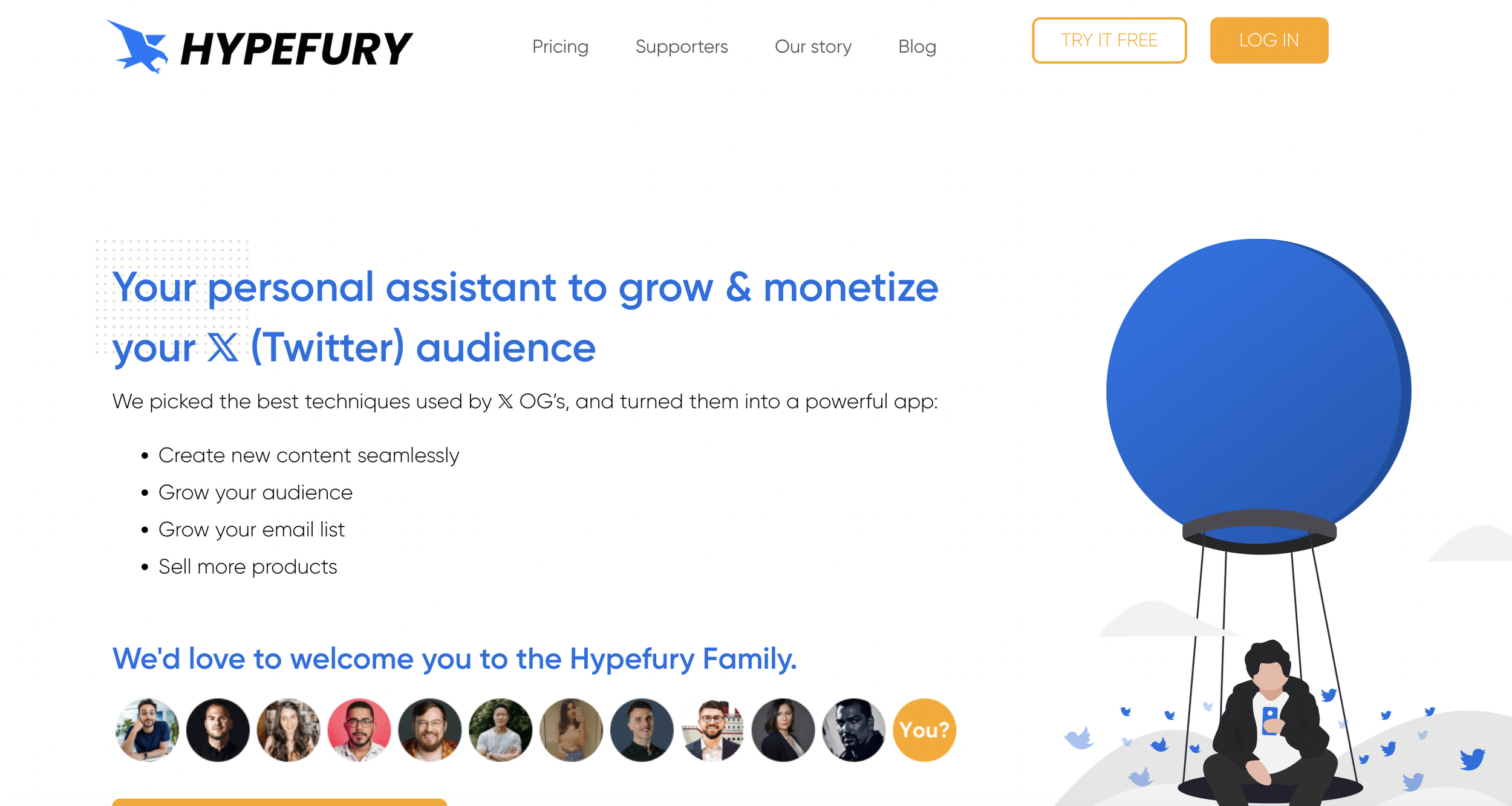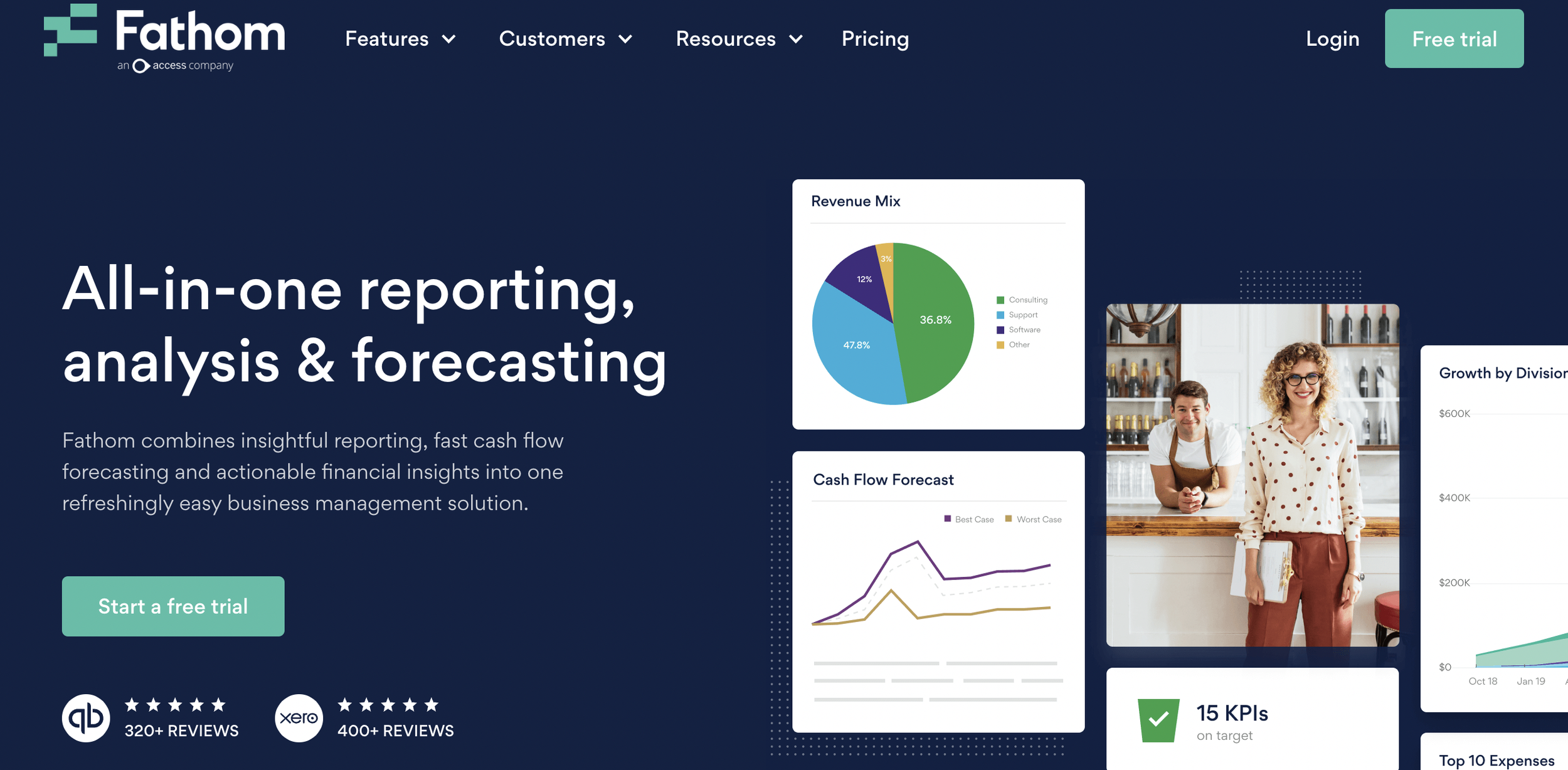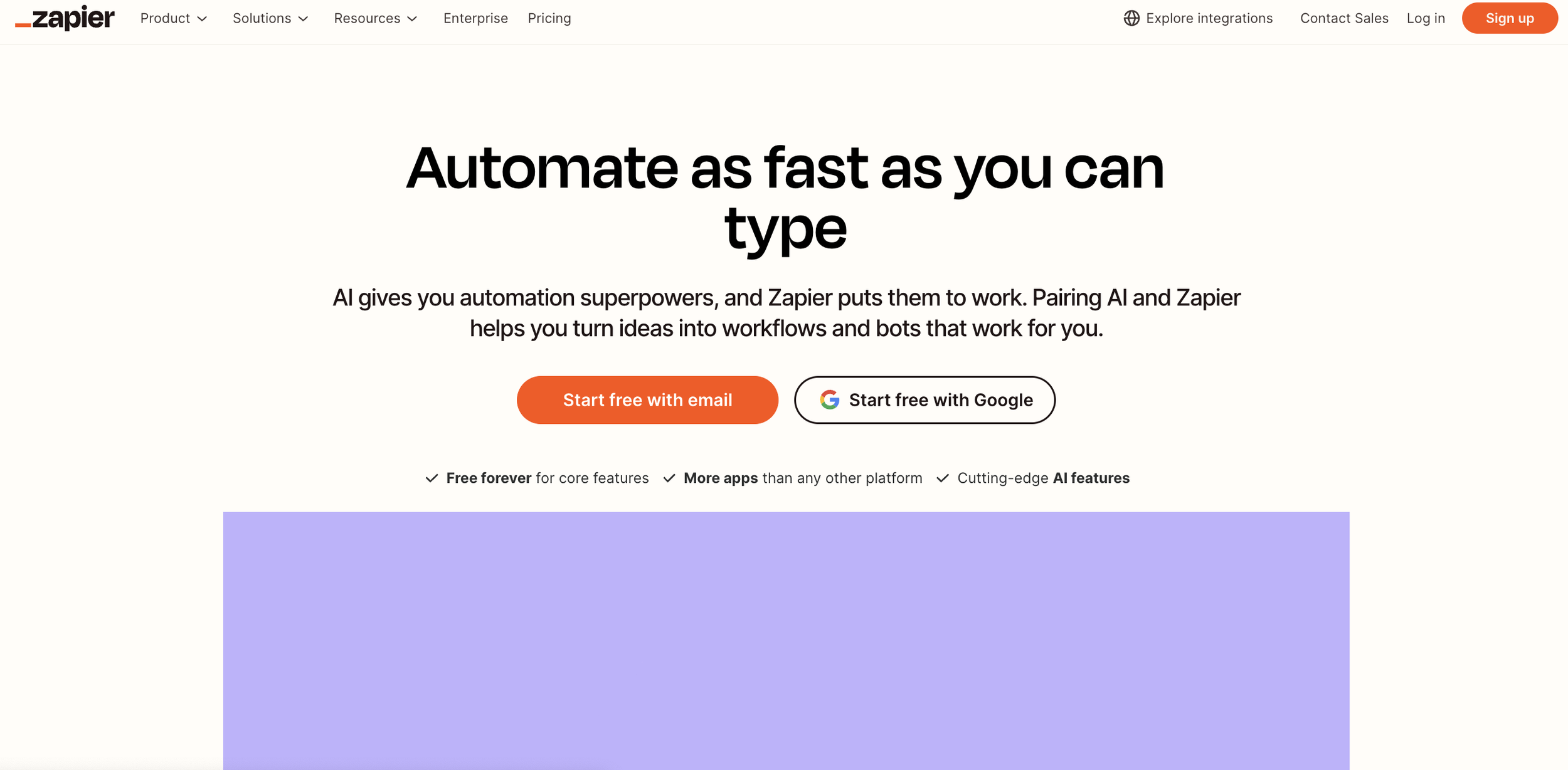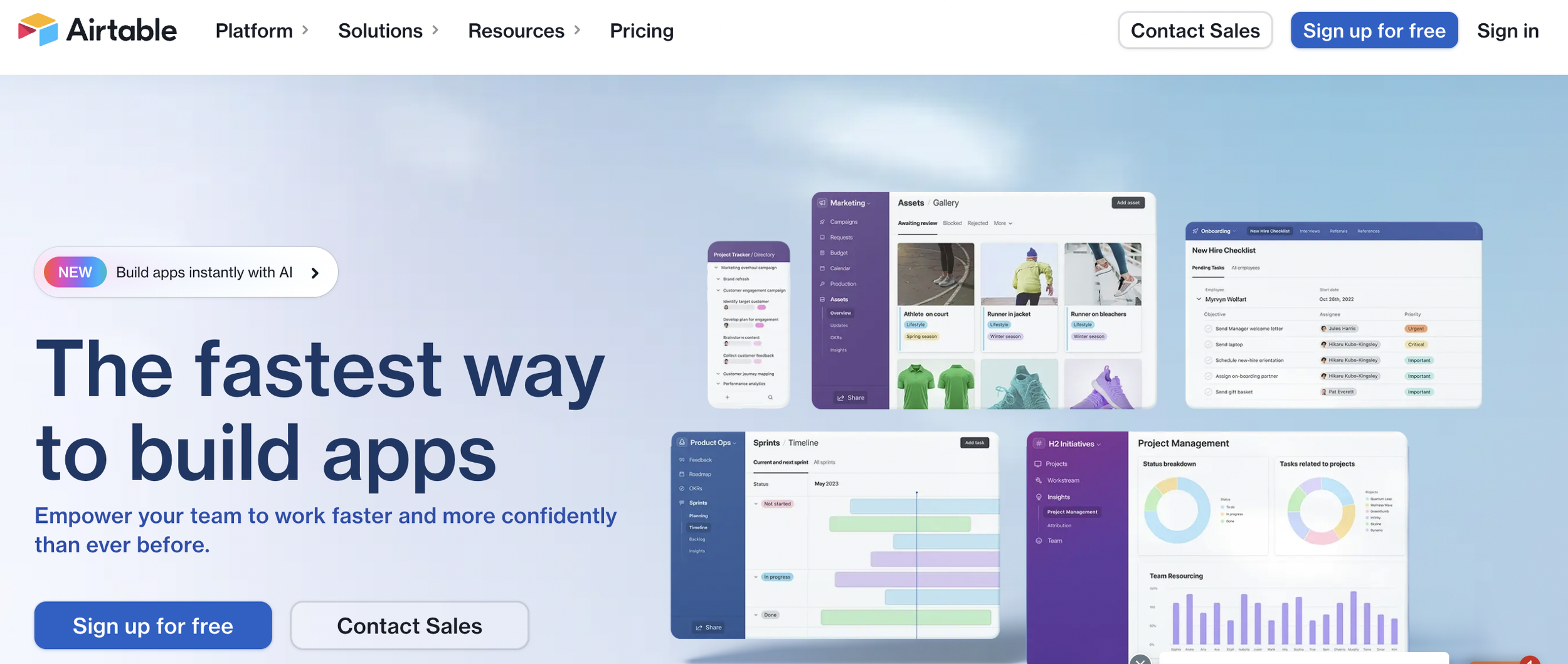How Justin Welsh Uses Automation for a $5 Million Business
Justin Welsh, a successful solopreneur, has built a $5 million business almost single-handedly.
One of his secrets?
Automation.
By strategically employing various digital tools, Justin has streamlined his operations, maximized efficiency, and scaled his business without the need for a traditional workforce.
Here, we delve into how Justin Welsh uses automation to run his business and the specific platforms he leverages to achieve his remarkable success.
The Power of Automation in Business
Automation is about more than just saving time; it’s about enhancing productivity, ensuring consistency, and enabling scalability.
For solo entrepreneurs like Justin Welsh, automation is the key to managing extensive operations without a large team.
It allows for the efficient handling of repetitive tasks, freeing up time to focus on high-value activities such as content creation and strategic planning.
The Role of Automation in Justin Welsh’s Business
1. Automated Course Completion Reminders
One of the standout features of Justin Welsh's approach to automation is his use of automated reminders to encourage course completion.
As students progress through his courses, they receive personalized notes at critical milestones (33%, 50%, and 75% completion).
These reminders are designed to motivate and guide students, ensuring they remain engaged and on track.
This practice significantly improves course completion rates and overall student satisfaction.
2. Discount Code Automation
Justin Welsh also automates the distribution and management of discount codes.
Instead of manually handling queries about discount codes, he sets up automated systems that provide the necessary information and codes to students seamlessly.
This not only reduces the administrative burden but also enhances the customer experience by making the process quick and hassle-free.
3. Automated Testimonials Collection
Gathering testimonials is crucial for building credibility and attracting new customers.
Justin automates this process by prompting satisfied students to leave testimonials at strategic points during their course.
This proactive approach ensures a steady stream of positive feedback, which is essential for marketing and continuous improvement of his courses.
4. Automated Email Campaigns
In his email marketing strategy, Welsh uses automation to deliver timely and personalized communication.
When users sign up for his newsletter, they receive an immediate welcome email. Justin Welsh employs advanced segmentation in ConvertKit to tailor emails based on interests, such as growing an audience or developing an online business.
This targeted approach ensures that subscribers receive relevant content, enhancing engagement and effectiveness.
5. Coaching Program Automation
Justin has automated his entire coaching program, which includes client onboarding, content delivery, and follow-up communications.
This ensures a smooth and consistent experience for his clients while minimizing manual effort.
6. Newsletter Sponsorship Program
He has fully automated his newsletter sponsorship program, managing sponsor interactions, scheduling, and payments without manual intervention.
This automation helps maintain a steady revenue stream and ensures timely communication with sponsors.
7. Content Production Automation
Most of Justin's content production is automated, from creation to distribution.
Tools and systems are in place to schedule posts, manage editorial calendars, and monitor engagement, allowing him to maintain a consistent online presence without daily hands-on management.
8. Additional Automations
Beyond these major areas, Justin Welsh has automated numerous other tasks.
This includes administrative processes like scheduling meetings, billing, and data management.
By automating these routine tasks, he frees up time for more strategic work.
Implementing Automation: Justin’s Automation Approach
Justin Welsh’s approach to automation is systematic and strategic. Here’s a breakdown of how he implements automation in his business.
Identifying and Eliminating Non-Essential Tasks
Justin begins his automation process by identifying tasks that are not meaningful or enjoyable.
He evaluates his activities and eliminates those that do not contribute to his business's core goals or that he personally dislikes.
This helps streamline his focus and reduce unnecessary workload.
Simplifying Complex Processes
Next, he examines his calendar and existing workflows to identify areas that are overly complicated. He seeks to simplify these processes, making them easier and more efficient to manage.
For instance, in his advising business, he used to handle client interactions, package delivery, and payments manually, which was time-consuming and cumbersome.
Automation of Simplified Workflows
Once simplified, Justin automates these workflows using various tools. An example is the automation of his advising business processes using Zapier, Kajabi, Airtable, and Calendly.
These tools help automate communication, billing, and document sharing, significantly reducing the manual effort involved.
Delegation and Creative Focus
Justin delegates tasks that cannot be automated, often relying on virtual assistants. This delegation strategy allows him to focus on creative work, which is the most critical aspect of his business.
His approach ensures that if a task can be automated, it is. If not, it is delegated.
Tasks that are unnecessary are eliminated, and complex ones are simplified. The remainder of his work, which requires his personal touch, is primarily creative.
Monitoring and Optimizing
Automation is not a set-it-and-forget-it solution. Justin continuously monitors the performance of his automated workflows and optimizes them for better efficiency.
This includes, reviewing analytics from tools like Fathom to understand user behavior and make data-driven adjustments. Gathering feedback from customers to improve automated communication and engagement.
Justin Welsh's Tech Stack Tools
1. Website: Kajabi
Kajabi is central to Justin Welsh's tech stack. It serves as his all-in-one platform for website management, landing pages, email marketing, forms, CRM, and course hosting. Kajabi's comprehensive features streamline various aspects of his business operations, making it easier to manage and scale.
2. Courses: Kajabi
Welsh uses Kajabi to host and manage his courses. The platform's integration with other tools helps streamline course delivery and student engagement.
3. Payments: Stripe
Stripe is integrated with Kajabi to handle payments seamlessly. Welsh receives payments efficiently, typically on weekdays, ensuring a smooth financial process.
4. Newsletter: ConvertKit
For managing his email newsletters, Welsh relies on ConvertKit. This tool supports advanced segmentation and automated email sequences, enabling Welsh to send personalized and relevant content to his subscribers.
5. LinkedIn Posting: Taplio
Taplio is Welsh’s tool for managing LinkedIn content. It automates post scheduling and performance tracking, allowing Welsh to maintain an active and engaging LinkedIn presence.
6. Twitter Posting: Hypefury
Hypefury is used for managing Welsh's Twitter activity. It automates social posting, retweets, and newsletter promotion. The tool also supports mass administration tasks, optimizing Welsh's Twitter strategy and engagement.
7. LinkedIn Analytics: Shield
Shield provides analytics for Welsh’s LinkedIn posts. It helps with performance tracking, repurposing old content, and understanding what resonates with his audience, aiding in the optimization of his LinkedIn strategy.
8. Website Analytics: Fathom
Welsh uses Fathom for website analytics. He finds Fathom easier to use compared to Google Analytics and appreciates its user-friendly dashboard for monitoring key performance metrics.
9. Newsletter Templates: Typeshare
Typeshare helps Welsh create high-quality newsletter templates. The tool allows him to draft newsletters efficiently, often in about 45 minutes, ensuring his content is both polished and timely.
10. Testimonial Display: Testimonial.to
Welsh uses Testimonial.to to collect and display client testimonials. The tool integrates directly into his courses, allowing students to submit video and text testimonials that are automatically approved and added to his landing pages.
11. Scheduling: Calendly
Calendly is used by Welsh to manage availability and schedule appointments. It simplifies the process of setting up meetings and sending reminders, contributing to smoother interactions with clients and collaborators.
12. Project Management: Notion
Notion serves as the central hub for Welsh's business operations. It is used for project management, content planning, networking, and maintaining his company roadmap. Notion's flexible and minimalistic design allows Welsh to customize workflows and manage content efficiently.
14. Automation Integration: Zapier
Zapier connects various tools that do not natively integrate, allowing Welsh to automate workflows across different platforms. It acts as the glue for his tech stack, enabling complex automation scenarios and streamlining processes.
15. Workflow Automation: Airtable
Airtable is used to automate workflows and manage data. It helps Welsh streamline processes and track various aspects of his business operations.
17. Community Management: Outseta
Outseta is employed for community management. It supports Welsh in managing memberships, subscriptions, and community interactions, enhancing the overall user experience.
Final Thoughts
Justin Welsh's strategic use of automation is a testament to the power of technology in modern entrepreneurship.
By identifying repetitive tasks and implementing the right tools, businesses can achieve greater efficiency, better customer outcomes, and sustainable growth.
Justin Welsh's success story underscores the importance of embracing automation as a key component of modern business strategy.
FAQ
What does Justin Welsh do?
Justin Welsh is a business coach and entrepreneur who specializes in helping individuals build successful online businesses. He provides coaching, creates educational content, and advises companies, particularly in the SaaS industry.
What platforms does Justin Welsh use?
Justin Welsh uses various platforms to streamline his business operations, including Zapier for automation, Kajabi for course delivery and client management, Airtable for organizing data, and Calendly for scheduling meetings.
Does Justin Welsh use Kajabi?
Yes, Justin Welsh uses Kajabi to manage his online courses, coaching programs, and other content. It helps him automate and streamline client interactions and content delivery.

